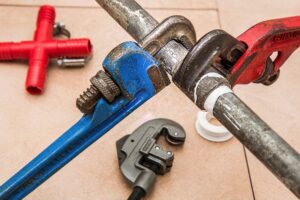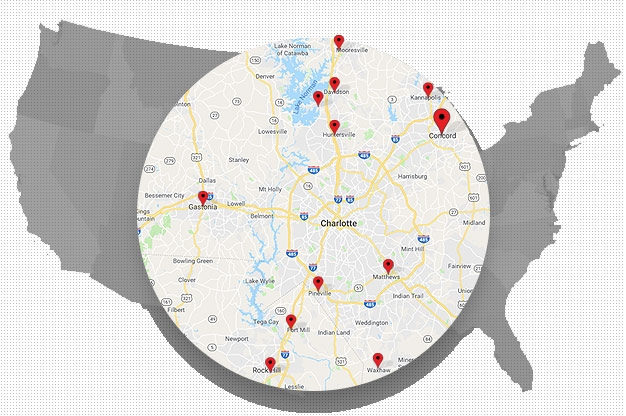7 Major Signs Your Sump Pump Is Failing

Projections show that the global sump pump market will reach a value of $20.58 billion by 2026.
A sump pump is an essential device that keeps your basement dry and makes sure any rainwater is draining out of your hope properly. It is generally located in your basement and collects water through your perimeter drains.
This water flows into a sump basin and the pump will then send it to the closest drainage point so that it is no longer problematic. They are often metal or plastic and usually submerged inside the chamber.
There are a number of problems that can occur with sump pumps, and if yours isn’t working properly it can lead to several larger issues, so it is something you want to stay on top of.
For a rundown of 7 of the main signs that your sump pump is failing keep reading.
1. Strange Noises
This is possibly the easiest to detect of all sump pump problems as you can notice it without even thinking about it. Sump pumps are generally very quiet, so any noise more than a quiet humming could be the sign of a larger problem.
This could indicate a problem with the motor, or more commonly could be the result of one or more worn/damaged parts. A professional will be able to advise how this can be fixed. Sometimes a quick repair job will be enough, but an entire sump pump replacement part may be needed.
2. Excessive Vibrations
One of the crucial parts of most types of sump pumps is the impeller. It is similar to a propeller but pulls things towards it rather than propelling an object. If any hard debris gets into the sump pump it can damage the impeller.
Impellers are specifically designed to be balanced to reduce wear. If damaged or bent it will be off-balance. This can lead to further problems in the future as more stress will be put on the shaft the impeller spins on.
A wobbling impeller will cause noise and vibrations, so if you think this has happened you will want to have it looked at. Impeller blades are very difficult to bend back into place correctly, so most of the time a replacement will be necessary.
3. Won’t Turn On
If you find that your sump pump won’t turn on it could be for several reasons. If you’re lucky it is something that won’t require professional sump pump repair.
A common example of this is a tangled float switch. This is quite common, and you can simply untangle it. Float switches are also sometimes secured by brackets that can break, which is a relatively easy fix that you can do yourself.
If this doesn’t seem to be the problem, however, you might need a full replacement.
4. Visible Rust
Sump pumps work with water, so there is a chance of rust occurring to some degree.
Most of the time rust in a sump pump is due to bacteria or a corroded battery. It then feeds off of the iron in water initially causing discoloration and, if not treated, can lead to clogs in your system.
Rust is something you should keep an eye out for. If you spot any you should immediately get sump pump maintenance as the longer you leave it, the worse it will get.
5. Motor Failure
A wiring issue could stop power from getting to the sump pump, but if the pump is receiving power and still not working it will likely be an internal electrical issue.
It could just be that it is not plugged in or a fuse/breaker issue, so check these first.
A blockage can stop water from exiting through the discharge line. In low temperatures water can also freeze causing a clog. If this happens and there is a backup of water the motor will increase its output level.
If a motor is running too hard it will eventually burn out and need replacing.
6. Infrequent or Irregular Usage
If you live somewhere that has long periods without rain your sump pump won’t run on its own. This can shorten the life of your pump, so it’s something to avoid.
You should test your pump every now and then in long dry periods to make sure it is still working properly.
During periods of heavy rain, your pump might cycle on and off a lot. If it does this then there is most likely a problem. Again this could be an issue with the float switch so may be easy to resolve.
Another possible cause is a wiring problem, either in the sump pump or elsewhere in your house.
7. Runs for Long Periods
Your sump pump should not run constantly. If it does then it most likely means the pump is not putting out enough power. This can either be in relation to the amount of water the system has to handle, or the distance that it must pump the water to get it out.
There are a lot of factors that determine how powerful of a pump your system needs. Aspects that affect this can include:
- Pipe diameters
- Pathways
- Plumbing elbows
- Reservoir dimensions
- The volume of water through the system
- Pushing water up vertical fixtures
These are all things that should be taken into consideration when your sump pump is installed, but if it turns out your pump is not powerful enough you will need a stronger one.
Sump Pump Service
If you notice any of the issues described above you’ll want to get it looked at as soon as possible. Sedona Waterproofing Solutions operate across North Caroline and our expert technicians can handle sump pump installations and replacements using top-quality products and materials.
If you want to no more click here to contact us today. We’re always happy to help.
Recent Posts
- How Crawl Space Encapsulation Benefits the Environment – An Expert Guide
- 6 Ways Professionals Keep Your Crawl Space in Top Shape
- Structural Repair Solutions for Crawl Spaces, Basements, and Foundations
- Essential Crawl Space Repair Tips Every Homeowner Should Know
- The Importance of Radon Mitigation: Ensuring a Safe Living Environment for Homeowners
Categories
- Basement Mold
- Basement Waterproof Foundation
- Basement Waterproofing
- Crawl Space Dehumidifier
- Crawl Space Encapsulation Cost
- Crawl Space Repair
- Crawl Space Waterproofing
- Encapsulation
- Foundation Repair
- Foundation Waterproofing
- French Drains
- Leaky Basement
- Mold Remediation
- Mold Removal
- Radon
- Slab Jacking
- Sump Pump
- Uncategorized
- Vapor Barrier
- Water Leak
- Waterproofing
- White Mold
Archives
- June 2024
- May 2024
- March 2024
- January 2024
- June 2023
- May 2023
- April 2023
- March 2023
- February 2023
- January 2023
- December 2022
- November 2022
- October 2022
- September 2022
- August 2022
- July 2022
- June 2022
- May 2022
- March 2022
- February 2022
- January 2022
- December 2021
- November 2021
- October 2021
- September 2021
- August 2021
- July 2021
- June 2021
- May 2021
- April 2021
- March 2021
- February 2021
- January 2021
- December 2020
- November 2020
- October 2020
- September 2020
- August 2020
- July 2020
- June 2020
- May 2020
- April 2020
- March 2020
- February 2020
- January 2020
- December 2019
- November 2019
- October 2019
- September 2019
- August 2019
- July 2019
- June 2019
- May 2019

